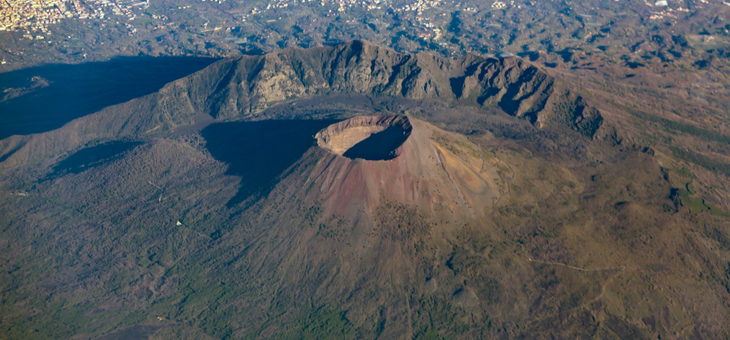Volcanoes are among the world’s most amazing wonders and many people have it on their bucket list to climb one and confront the awesome force of nature.
Some of the world’s biggest volcanoes are quite a challenge to climb, however, and it is possible that your peak fitness has passed you by, which means that not all volcano climbs are possible.
There are, however, some very active volcanoes that are more accessible than others, so here are some of the best volcanoes that are easy to conquer.
Whakaari/White Island
Perhaps more famous for the eruption in 2019, which killed 22 tourists and seriously injured 25 others, this was a popular tourist destination before that moment. Then COVID hit and the tour operators in the area had to take another hit.
White Island consists of overlapping volcanic cones, known as the Ngatoro and Central cones.
You cannot visit the island without permission, but it is easily accessible by authorised tourist operators.

Mount Vesuvius
Vesuvius is the only volcano on the European mainland to have erupted within the past hundred years.
Today, it is regarded as one of the most dangerous volcanoes in the world because 3,000,000 people live near enough to be affected by an eruption, with 600,000 in the danger zone, making it the most densely populated volcanic region in the world.
The summit of Vesuvius is open to visitors and there is a small network of paths around the volcano that are maintained by the park authorities over weekends.
There is access by road to within 200m of the summit (measured vertically), but thereafter access is on foot only. There is a spiral walkway around the volcano from the road to the crater.

Mount Pinatubo
Pinatubo in the Philippines is famous for an eruption in 1991 that claimed hundreds of lives and was the second-largest eruption of the 20th century. However, the last eruption from Mount Pinatubo took place in 1993. The caldera formed in 1991 later filled with water from annual monsoon rains and a crater lake, Lake Pinatubo, was formed.
There are bus rides and 4×4 tours that can get you close to the shore of the tropical crater and hiking the rest of the way is very manageable.
Mount Bromo
This area is one of the most visited tourist destinations in East Java, and the volcano is included in the Bromo Tengger Semeru National Park.
The name Bromo comes from the Javanese pronunciation of Brahma, the Hindu god of creation.
A typical way to visit Mount Bromo is from the nearby mountain village of Cemoro Lawang. From there it is possible to walk to the volcano in about 45 minutes, but it is also possible to take an organised jeep tour, including stops at the viewpoint of Mount Penanjakan.
The sights on Mount Penanjakan can also be reached on foot in about two hours. Depending on the level of volcanic activity, the Indonesian Center for Volcanology and Disaster Mitigation sometimes issues a warning not to visit Mount Bromo.
Telica
One of Nicaragua’s most active volcanoes, Telica erupts frequently, and the resulting ash keeps the slopes of its cone bare of vegetation.
The volcano’s proximity to the city of Leon makes Telica a popular tourist attraction.
Most hikes enter through the small town of San Jacinto, which is known for its bubbling mud pits.
Telica has six cones, the tallest of which is 1061m high. There is a double crater at the top, 700m wide and 120m deep, and the volcano last erupted on 29 July last year.
Telica only became active in August 1999. An eruption produced ash fall, and on 18 August a lava lake was observed in the summit crater. The ash eruptions continued until February 2000 and declined afterwards.
Have you ever hiked to the summit of an active volcano? Which volcano did you climb? Share any hikes you would recommend for more mature climbers in the comments section below.
Also read: The best British walks and hikes to put a spring in your step


Yes. I climbed the volcano on the island of Tanna Vanuatu in the 1970s. It erupted as I stood on the lip looking down at umpteen football grounds of molten lava while listening to its very loud rumbling. Rocks from the size of eggs to basketballs flew up into the air. I put my movie camera on my head while my husband shouted, “Take a photo!” I finally filmed the sulfurous plume when I was safely back on Vanuato’s shores.